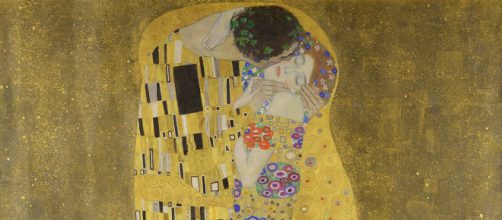The upsurge of immersive art shows is drowning the exhibit halls with their oceanic-sized enlargements of famous paintings and heightened further with piped-in instrumentals.
Welcome to the age of pageantry, where old and modern masters are made to echo the glitzy stage set scenery of Broadway musicals.
And if immersive shows don’t remind you of the great white way’s razzle-dazzle, they’ll likely conjure up amusement park attractions that transform art shows into Disney-like entertainment.
As if paintings by art world greats weren’t worth a damn unless dressed up with flashy special effects.
So far, immersive art shows have made mise-en-scenes out of Van Gogh’s "Starry Night," Monet’s "Water Lilies," Picasso’s "Guernica," Da Vinci’s "Mona Lisa," Kahlo’s self-portraits and Goya’s "Third of May."
Blowing up Klimt
Now comes an immersive Klimt show. I’ve restrained my outrage over these extravaganzas, but I draw the line at Klimt. He doesn’t need embellishment. He festoons his imagery like no other – unabashedly – and if I may say, ad nauseam.
Klimt routinely sets half bare female figures in sumptuously jewel-like surroundings, presumably to intensify their allure. Does anyone really need augmentation of this stuff to get what he’s doing?
Consider his portrait of Adele Bloch-Bauer swathed in gold and set in so much ornamental profusion that she comes across like some idol used for worship.
Then there’s "Salome," also a semi-nude and also interlaced with superabundant frill, but this time with a man at her feet. Either it’s a glorification of the female or plain old hedonism. Take your pick. Embellishment is this guy’s middle name.
Wait, one more – Klimt’s portrait of Friederike Beer upright in a lavishly patterned gown set against a lavishly patterned background. Only her rouged face stands out. The rest of her blends into a background so flowery that you imagine whiffs of fragrant perfume.
Perfume is not what Beers got a whiff of around Klimt. She told Alessandra Comini in her 1979 bio of "Egon Schiele" that the most noticeable thing about Klimt was his “animalism.” She said he even smelled like an animal.
Making Rodin swoon
But Rodin saw Klimt in a wholly different way, as highly acculturated. The sculptor’s biographer Frederic Grunfeld recounted a garden party at Klimt’s house where Rodin heard the painter ask a pianist to play Schubert.
That’s when Rodin said to Klimt, “I have never experienced such an atmosphere… your unforgettable, temple-like exhibit, and now this garden... this music...” See? No need for amplifying Klimt’s shows, unless maybe you want to throw in some Schubert.
No such luck. Fasten your seat belts, folks. Coming to NY this summer is “Gustav Klimt: Gold in Motion” produced by L'Atelier des Lumières, the French company responsible for the immersive Van Gogh show in Paris that drew 1.4 million visitors.
The Klimt show will be housed in the 33,000-square-foot building formerly known as the Emigrant Industrial Savings Bank – once the biggest bank in the U.S. – now to be renamed the Hall des Lumières.
What, no dancing girls?
And get this, the show will present animated 30-foot-tall images of Klimt’s best-known work synchronized to an original score. Is this a good thing for art appreciation?
Rob Kirk, head of the Lumieres’ touring shows, admitted to the New Yorker they’re “very rarely very educational.” Where does that leave us?
If immersive shows keep increasing, how can old-timey easel paintings hanging in museums’ hushed halls ever compete?


